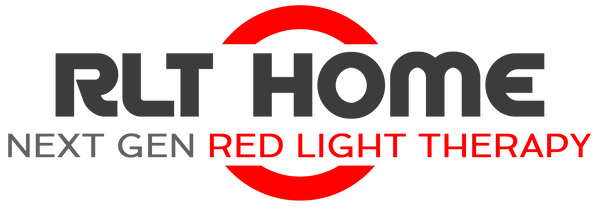A bulging disc is when the soft core of an intervertebral disc bulges outward, potentially compressing adjacent spinal nerves and causing pain and immobility. It can lead to long-term back pain, stiffness, and nerve symptoms like tingling or weakness. While conventional treatments exist, many are seeking side-effect-free, non-surgical options. One of the most promising is red light therapy, which is recognized for its pain-relieving properties and ability to accelerate recovery at a cellular level.
Table of Contents
Understanding Bulging Discs: Causes, Symptoms, and Impact
A bulging disc occurs when the inner gel-like portion of a spinal disc protrudes outward, creating a bulge that may compress nearby nerves. This can be caused by the natural aging process, poor lifting techniques, or jobs involving constant bending. Being overweight also increases stress on the spine. Common signs include localized pain in the back or neck, stiffness, and numbness or tingling in the arms or legs if nerves are compressed.
Challenges with Traditional Treatments for Bulging Discs
Conventional therapies often aim to alleviate symptoms, not the cause. Medications can provide temporary relief but may create side effects with long-term use. Physical therapy is beneficial but requires weeks or months to feel its effects. Epidural steroid injections can reduce inflammation, but the effects are temporary. Surgery is usually reserved for severe cases and comes with its own risks. This is why many are exploring the benefits of using a medical-grade red light therapy panel.
How Red Light Therapy Supports Spinal Health and Recovery
The Science Behind Red Light Therapy for Disc and Nerve Healing
Red light therapy is a non-invasive method involving the application of specific red and near-infrared wavelengths. The light is absorbed by cells, stimulating the mitochondria to generate additional energy in the form of ATP. This energy fuels cellular processes like repair and regeneration.
For a bulging disc, where nerves may be compressed, red light therapy is beneficial as it stimulates cellular repair. It also improves circulation, getting more oxygen and nutrients to damaged cells and speeding up the recovery process. It also has a natural effect on reducing inflammation and pain, aiding in recovery from painful conditions like a bulging disc without medication or surgery.
Does Red Light Therapy Work for Bulging Discs? What Research Says
While research is in its early stages, initial studies have shown positive results. Some studies suggest that red light therapy relieves pain and inflammation, two of the main concerns of a bulging disc, and heals damaged nerves by triggering cell repair. A 2020 study in *Lasers in Medical Science* found red light therapy highly reduced back pain and enhanced mobility in subjects with lumbar disc herniation.
Clinical Studies on Red Light Therapy for Spinal Disc Issues
Study 1: LED Therapy in Chronic Low Back Pain
This research aimed to determine whether LED light therapy could decrease pain and fatigue in healthcare personnel with chronic low back pain. Subjects who underwent real LED treatment reported a significant decrease in pain level and improvements in their range of motion compared to the placebo group. [1]
Study 2: Evaluating LLLT for Lower Back Nerve Pain Relief
The purpose of this study was to determine the efficacy of low-level laser therapy (LLLT) in patients with lumbar radiculopathy (nerve pain from a disc). The group given LLLT in addition to physical therapy had substantially improved reductions in pain and improvement in movement compared with the control group. [2]
Choosing the Right Red Light Therapy Device for Disc Support
A quality device must have specific features to be effective. It must be able to emit red light in the 610–660 nm range and near-infrared light in the 810–850 nm range. The device must also possess enough power output (irradiance) to allow the light to penetrate deep. Choose a machine with low EMF and no flicker. The RLT Home Total Spectrum Series is designed with these features in mind.
Best Practices for Using Red Light Therapy for Bulging Discs
Finding the Right Dosage: Frequency, Session Length, and Distance
After buying the correct device, you must also comply with guidelines to carry out the therapy effectively. For a comprehensive guide to the correct dosage, always consult the official instructions. You should begin with sessions 3 to 5 times a week, and each session should last 10 to 20 minutes. It is advisable to position the device 6 to 12 inches from your body to avoid overheating.
Conclusion: The Role of Red Light Therapy in Bulging Disc Recovery
More and more people are using red light therapy for bulging discs since it is a pain-free, secure, and non-invasive method. It provides symptom relief by controlling inflammation, stimulating cellular healing, and promoting blood circulation. Healing is promoted by this treatment, and pain is reduced quite effectively.
FAQs: Addressing Common Questions
Does red light therapy work on bulging discs?
Yes, red light therapy helps with bulging discs by reducing pain and inflammation and by promoting nerve healing.
What is the best therapy for bulging discs?
The most effective therapy usually consists of a combination of physical therapy, pain relief, and lifestyle modification. Red light therapy is also becoming increasingly popular for reducing swelling and accelerating healing.
Does red light therapy help degenerative disc disease?
Yes, red light therapy may help people with degenerative disc disease. It works by reducing inflammation, easing pain, and promoting cellular repair in the spine.
References
- Light-emitting diode photobiomodulation therapy for non-specific low back pain in working nurses.
- Effectiveness of Low-Level Laser Therapy in Patients with Discogenic Lumbar Radiculopathy...







